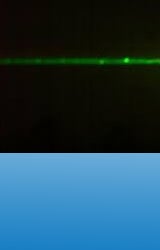Red vs. Green Laser Sights - What's the Difference?
Laser light sightings has becoming more popular over the years with law enforcement, tactical shooters, and the everyday target shooters. There are low light situations that require more than just your typical cross hairs to align an accurate shot. The most common laser lights used are red and green - but what is the difference between the two? Are they the same and do they work similarly to each other? Well we are glad you asked...
A Red Laser is overall good for someone who needs a longer lasting laser and may be limited by a budget. A Red Laser light is more common for tactical weapon lights and is cheaper to make because it only requires one diode. It also works better in a wider temperature range. A typical tactical red laser sight is operated between 15 and 120 degrees Fahrenheit - which is almost double the operating temperature range of a green laser sight. If you live in colder locations, then a red laser may be best because it'll have less effect on the overall output.
One example of a Red Laser Light is: Streamlight TLR-4 Compact Rail-Mounted Handgun light with Red Aiming Laser
Pros: Costs less than green laser lights, better resists
constant gun recoils, operates in a larger temp.
range.
Cons: Harder to see in the daylight
The other most used laser is the Green Laser. The Green Laser is easier to see with the human eye because it sits in the middle of the light spectrum. Color waves are measured using nanometeres and since the human eyes see colors that fall in the middle of the color spectrum - a Green Laser which can be from 495 to 570 nanometers long is easier to see. Green Laser sightings can easily be seen up to a 100 yards, whereas a Red Laser is more apt to fall in the 25-30 yard range. These features make Green Laser lights perfect for law enforcement and tactical users that need aim accuracy during the day and at night.
An example of a Green Laser Light is: Streamlight TLR-2 G Rail-Mounted LED Weapon Light with Green Aiming Laser
Pros: Highly visible in daylight, easily seen up to 100
yards
Cons: Costs More, doesn't work as well in certain
temperatures
Care to Share?
Red vs. Green Laser Sights - What's the Difference?
Laser light sightings has becoming more popular over the years with law enforcement, tactical shooters, and the everyday target shooters. There are low light situations that require more than just your typical cross hairs to align an accurate shot. The most common laser lights used are red and green - but what is the difference between the two? Are they the same and do they work similarly to each other? Well we are glad you asked...


A Red Laser is overall good for someone who needs a longer-lasting laser and may be limited by a budget. A Red Laser light is more common for tactical weapon lights and is cheaper to make because it only requires one diode. It also works better in a wider temperature range. A typical tactical red laser sight is operated between 15 and 120 degrees Fahrenheit - which is almost double the operating temperature range of a green laser sight. If you live in colder locations, then a red laser may be best because it'll have less effect on the overall output.
One example of a Red Laser Light is: Streamlight TLR-4 Compact Rail-Mounted Handgun light with Red Aiming Laser
Pros: Costs less than green laser lights, better resists constant gun recoils, operates in a larger temp range.
Cons: Harder to see in the daylight


The other most used laser is the Green Laser. The Green Laser is easier to see with the human eye because it sits in the middle of the light spectrum. Color waves are measured using nanometeres and since the human eyes see colors that fall in the middle of the color spectrum - a Green Laser which can be from 495 to 570 nanometers long is easier to see. Green Laser sightings can easily be seen up to a 100 yards, whereas a Red Laser is more apt to fall in the 25-30 yard range. These features make Green Laser lights perfect for law enforcement and tactical users that need aim accuracy during the day and at night.
An example of a Green Laser Light is: Streamlight TLR-2 G Rail-Mounted LED Weapon Light with Green Aiming Laser
Pros: Highly visible in daylight, easily seen up to 100 yards
Cons: Costs More, doesn't work as well in certain temperatures










Login and Registration Form